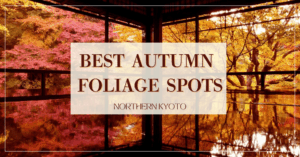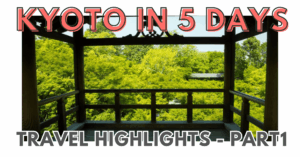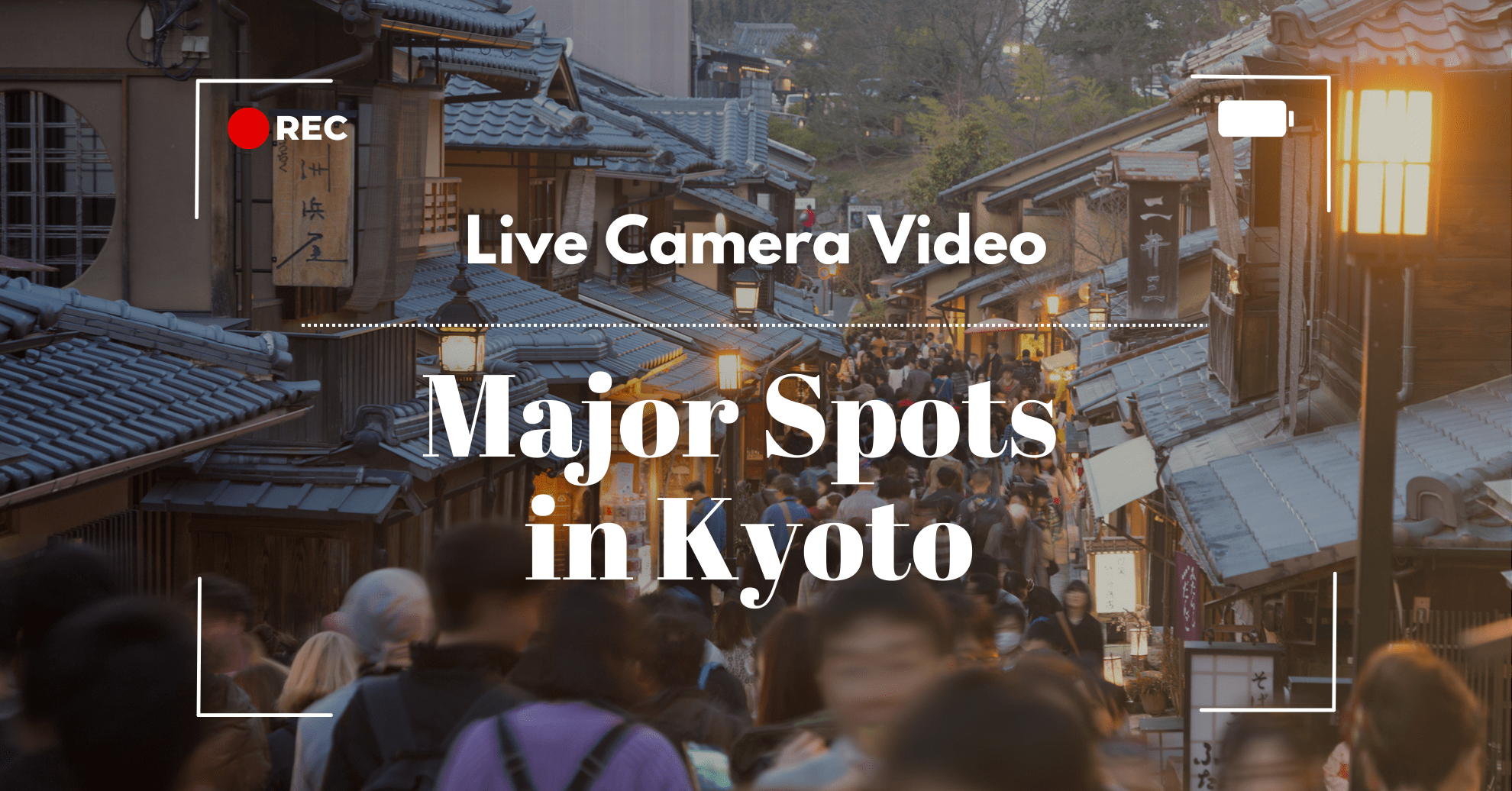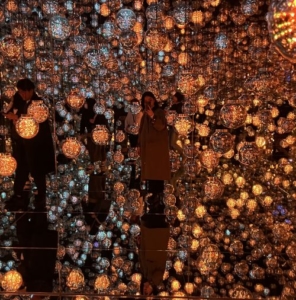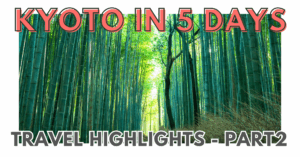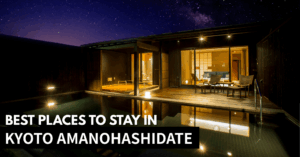Live Camera & Google Maps Coverage for Central Kyoto
This page features links to live cameras and Google Maps that show the real-time weather and crowd levels at popular sightseeing spots in Kyoto. If live cameras aren’t available for a location, Google Maps congestion data is provided as an alternative.
We’ve also included brief overviews of each attraction—perfect for when you’re deciding where to go or want to get to know the area better.
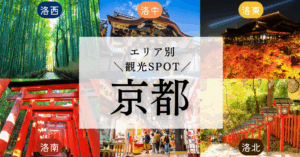
Highlights in Central Kyoto (Rakuchu Area)
Kyoto’s Rakuchu area encompasses the heart of the city, including Kyoto Station and the bustling Nishiki Market. It’s packed with shopping streets, gourmet food, and historic landmarks like Higashi Hongan-ji.
Family-friendly destinations like the Kyoto Aquarium and Kyoto Railway Museum are also located here, making it ideal for travelers of all ages.
With many iconic “Kyoto” experiences packed into one compact area, it’s perfect for those on a tight schedule.
Kyoto Station
A gateway to the city where shopping, dining, and scenic views converge
Kyoto Station incorporates the ancient grid design of Heian-kyo and includes spiritual elements inspired by Shinto and Buddhist traditions.
The expansive station building houses hotels, shopping malls, electronics megastores, and even Kyoto Ramen Koji—a ramen-themed food court where you can sample noodles from across Japan, including Kyoto’s beloved ramen shops.
Be sure to check out some hidden scenic spots as well, such as the Skyway Promenade and the rooftop garden with views of Kyoto Tower.
Busy bus stops and taxi stands (especially Hachijo Exit, which leads to the southern parts of Kyoto like To-ji Temple) are constantly bustling with tourists.
| Kyoto Station Address: 8-3 Higashishiokoji Takakura-cho, Shimogyo-ku, Kyoto Hours: Central & Hachijo Exits open 05:45–23:30 HP:https://railway.jr-central.co.jp/station-guide/shinkansen/kyoto/ |
Nishiki Market
A culinary haven known as “Kitchen of Kyoto”
Nishiki Market is Kyoto’s premier destination for food lovers and shoppers. Stretching approximately 390 meters under a colorful arcade roof, this market is home to around 120 shops offering everything from traditional sweets and sushi to sake and fresh seafood.
For breakfast, don’t miss the dashi-maki tamago (Japanese-style rolled omelet) from Miki Keiran, a specialty egg shop. Their rich broth-infused omelets and creamy egg yolk-filled pastries are local favorites.
| Nishiki Market Address: 609 Nishidaimonji-cho, Nakagyo-ku, Kyoto TEL:075-211-3882(Nishiki Market Promotion Association) Hours and closures vary by store HP:https://www.kyoto-nishiki.or.jp/en/ |
Higashi Hongan-ji
A temple rooted in salvation through the Nembutsu—no amulets required
Officially known as Ōtani Mausoleum (Ōtani Sobyō), Higashi Hongan-ji enshrines Shinran Shonin, the founder of the Jōdo Shinshū (True Pure Land School of Buddhism). Shinran’s core teaching—salvation through reciting “Namu Amida Butsu”—has deeply influenced generations of Japanese people.
The temple was originally built to house a portrait of Shinran after his death. Though it later split into Eastern and Western branches following a battle during the Oda Nobunaga era, both sects remain deeply respected today. Locals affectionately refer to Higashi Hongan-ji as “O-Higashi-san.”
Don’t miss the massive wooden Sanmon Gate (one of the world’s largest), the plaque inscribed with “Ōtani Sobyō,” and the Goei-dō Hall where Shinran’s image is enshrined. The serene atmosphere evokes a profound sense of spirituality.
| Higashi Hongan-ji Address:Karasuma-dori Shichijo-agaru, Shimogyo-ku, Kyoto TEL:075-371-9181 Hours March–October:5:50–17:30 November–February:6:20–16:30 HP:http://english.higashihonganji.or.jp/english_top/ |
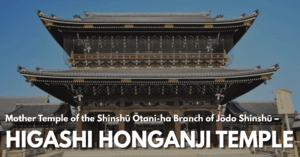
Nishi Hongan-ji

A World Heritage Site celebrating the lavish aesthetics of the Momoyama period
Located about 10 minutes by car or bus from Kyoto Station, Nishi Hongan-ji is the head temple of the Jōdo Shinshū Hongwanji-ha school. It is registered as a UNESCO World Heritage Site for its wealth of historical and cultural treasures, including writings and images by Shinran Shonin.
A standout feature is the Karamon gate—a dazzling example of Momoyama-period design, with black lacquer, intricate carvings of peonies and guardian lions, and a rich sense of grandeur. It’s so captivating that it’s nicknamed “Higurashi-mon,” meaning a gate so mesmerizing you could watch it until sundown.
Be sure to also check out the massive “Inverted Ginkgo Tree” (Sakasa Icho), which spreads its roots like a giant sculpture.
| Nishi Hongwanji Address: Honganji-monzen-cho, Hanaya-cho-sagaru, Horikawa-dori, Shimogyo-ku, Kyoto TEL:075-371-5181 Hours:5:30–17:00 HP:https://www.hongwanji.kyoto/en/ |
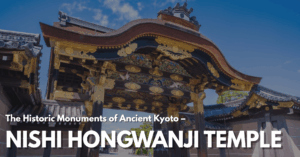
Nijo-jo Castle

A historic landmark where Japan’s power shifted hands
Built in 1603 by Tokugawa Ieyasu, the first shogun of the Edo period, Nijo-jo Castle served both as a Kyoto residence for shoguns and a protective outpost near the Imperial Palace.
It played a critical role in Japanese history as the location where the Tokugawa Shogunate declared its return of power to the Emperor—a moment known as the Meiji Restoration.
Explore the ornate Ninomaru Palace, adorned with painted sliding doors by the Kano school, and gain insight into the magnitude of Tokugawa rule. Don’t miss seasonal events like the Nijo-jo Castle Cherry Blossom Festival, where the grounds are illuminated at night.
| Nijo-jo Castle Address: 541 Nijojo-cho, Horikawa-nishiiru, Nijo-dori, Nakagyo-ku, Kyoto TEL:075-841-0096 Hours:8:45–17:00(Last admission at 16:00) Closed: December 29–31 HP:https://nijo-jocastle.city.kyoto.lg.jp/?lang=en |
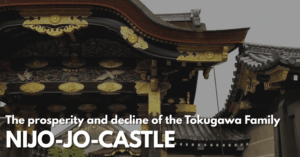
Kitano Tenmangu
The Head Shrine of All Tenmangu Shrines Dedicated to the God of Scholarship
Kitano Tenmangu is the head shrine among approximately 12,000 Tenmangu shrines across Japan, all of which enshrine Sugawara no Michizane, a renowned scholar and politician. Known as the deity of learning, Michizane’s legacy draws countless visitors each year—particularly students seeking academic success.
The shrine is also deeply rooted in Kyoto’s cultural history, once hosting tea ceremonies led by Toyotomi Hideyoshi and Sen no Rikyū. It’s now also revered as a guardian of the arts and culture.
Visitors can’t miss the “Nadeushi” (stroking ox statue), said to improve your intellect when touched, or the weeping plum trees that bloom beautifully in early spring.
| Kitano Tenmangu Address: Bakurocho, Kamigyo-ku, Kyoto TEL:075-461-0005 Hours:7:00–17:00 HP:https://kitanotenmangu.or.jp/(Japanese only) |
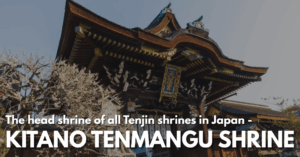
Kyoto Gyoen National Garden
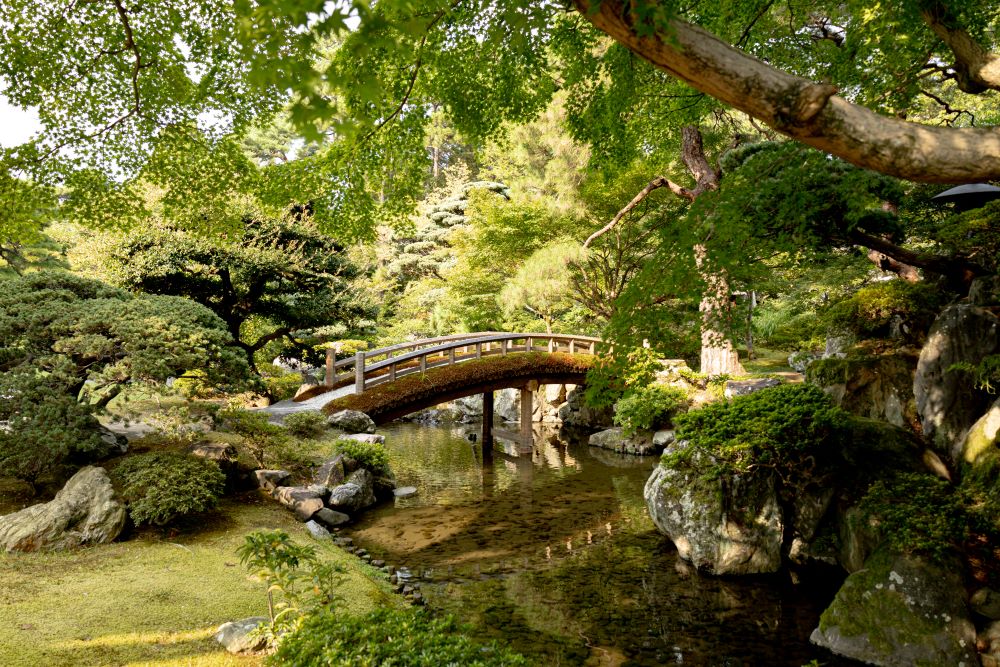
An Urban Oasis Preserving Over a Millennium of Imperial History
Kyoto Gyoen is home to the Kyoto Imperial Palace, which served as the residence of Japan’s emperors for over a thousand years, from the Heian period through the Meiji Restoration.
Today, the palace grounds have been transformed into a spacious public park offering scenic gardens, rest areas, sports fields, and playgrounds. It remains a cherished gathering spot for locals and visitors alike.
The park includes the Kyoto Imperial Palace, Omiya Palace, Sento Imperial Palace, and the Kyoto State Guest House. Among its facilities, the Nakadachiuri Rest House—known as the “Forest Rest House”—offers traditional meals and bento lunches with a view of the historic palace.
Visitors can enjoy a peaceful stroll through Kyoto Gyoen while appreciating its natural beauty and historical significance. Recommended visit duration: 1 to 3 hours.
| Kyoto Gyoen National Garden Address: 3 Kyoto Gyoen, Kamigyo-ku, Kyoto TEL: 075-211-6348 (Kyoto Gyoen Management Office) Hours: Vary by facility HP:https://kyotogyoen.go.jp/en/ |
Around the Kamogawa River

A Beloved Local Escape for Experiencing Kyoto’s Natural Seasons
Flowing roughly 27 kilometers north to south through Kyoto, the Kamogawa River originates near Mount Sajikigatake and merges with the Katsura River.
Throughout its long history alongside the ancient capital, the Kamogawa River has played a central role in the lives of Kyoto’s residents and continues to be a cherished recreational space.
One of its best-known features is the playful stepping stones shaped like birds, boats, and turtles—popular photo spots and filming locations for movies and TV shows.
In summer, riverside dining platforms known as Kamogawa Nouryou-Yuka are set up, offering a refreshing dining experience unique to Kyoto. Nearby Pontocho alley is also a must-visit for its local cuisine and traditional atmosphere.
| Kamogawa River Park Address: Matsunoshita-cho, Izumoji, Kita-ku, Kyoto TEL: 075-701-0101 (Kyoto Prefectural Civil Engineering Office) HP:https://www.pref.kyoto.jp/koen-annai/kamo.html |
Nidec Kyoto Tower

Panoramic Views, Dining, Shopping, and a Hotel in One Iconic Spot
Standing 100 meters tall, Kyoto Tower offers the highest vantage point in the city, allowing for a full 360-degree view of Kyoto’s unique cityscape.
In addition to the observation deck, the tower houses restaurants and souvenir shops—perfect for ending your day with a relaxed indoor experience.
A visit typically takes around one hour and offers a memorable farewell to the ancient capital.
| Nidec Kyoto Tower Address: 721-1 Higashishiokojicho, Shimogyo-ku, Kyoto Hours: Observation Deck: 10:00–21:00 Restaurants: 11:00–23:00 Shops: 1F 10:00–21:00 / 2F 10:00–19:00 HP:https://www.kyoto-tower.jp/en/ |
Shimogamo Shrine (Kamomioya Shrine)
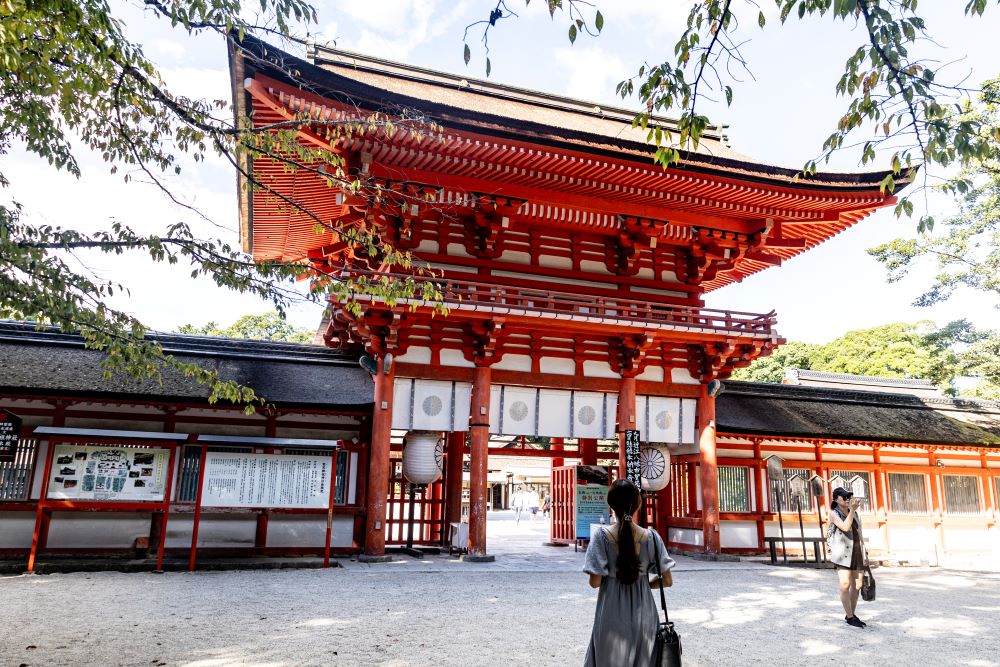
Feel the Mystical Power of the Forest and Pray for Beauty at This Sacred Site
Officially named Kamomioya Shrine, Shimogamo Shrine is one of Kyoto’s oldest Shinto shrines and has long been revered by the imperial court since the founding of Heian-kyo. The surrounding forest, Tadasu-no-mori, is believed to be a spiritual power spot filled with ancient energy and sacred legends.
The shrine’s atmosphere, wrapped in nature, is both awe-inspiring and tranquil. Within the grounds, you’ll find Kawai Shrine, which enshrines the deity of beauty. A popular tradition here involves drawing a face on a hand mirror-shaped ema (votive plaque) using your own makeup, as a prayer for beauty inside and out.
| Shimogamo Shrine (Kamo Mioya-jinja) Address: 59 Shimogamo Izumigawa-cho, Sakyo-ku, Kyoto TEL: 075-781-0010 Hours: 06:00–17:00 HP:https://www.shimogamo-jinja.or.jp/en |
Kyoto Aquarium

Aquatic Wonders and Sustainability in the Heart of Kyoto
Located within Umekoji Park, Kyoto Aquarium houses a variety of marine creatures including dolphins, penguins, and the Japanese giant salamander. More than just an aquarium, it serves as an educational hub for children through its “AQTION!” initiative, which aims to raise awareness about nature, life, and the future.
The “Aqua Academy” hosts daily hands-on activities, such as jellyfish-themed crafts and fish drawings, that engage even the youngest visitors. Don’t miss the gift shop, where unique Kyoto-inspired items like Nishijin-ori (traditional Kyoto textile) salamander coin purses are available.
| Kyoto Aquarium Address: 35-1 Kankiji-cho, Shimogyo-ku, Kyoto (Inside Umekoji Park) TEL: 075-354-3130 Hours: 09:00–20:00 HP:https://www.kyoto-aquarium.com/en/index.html |
Kyoto Railway Museum

Interactive Fun for All Ages at One of Japan’s Largest Railway Museums
Just a short walk from Umekoji Park, the Kyoto Railway Museum offers a comprehensive journey through the history of Japanese railways. The highlight is the semi-circular roundhouse—Japan’s oldest reinforced concrete engine depot—lined with steam locomotives.
The museum features guided tours by staff, workshops hosted by JR West employees, and hands-on experiences such as train operation simulations. Whether you’re a railway enthusiast or visiting with children, this museum has something for everyone.
| Kyoto Railway Museum Address: Kankiji-cho, Shimogyo-ku, Kyoto TEL: 0570-080-462 Hours: 10:00–17:00 (last entry 16:30) Closed: Wednesdays and New Year holidays (Dec 30 – Jan 1) HP:https://www.kyotorailwaymuseum.jp/en/ |
Honno-ji temple
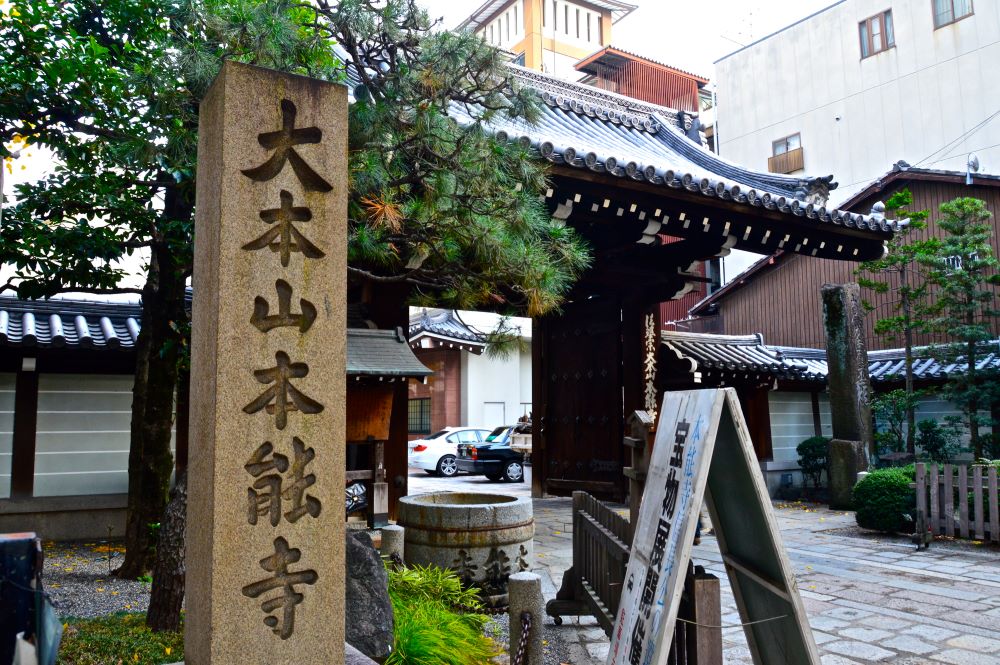
A Temple of Tragedy and Rebirth—The Site of the Honno-ji Incident
Honno-ji temple is best known as the site of one of the most dramatic betrayals in Japanese history—the Honno-ji Incident. It was here that Oda Nobunaga, a powerful warlord, met his end at the hands of his vassal, Akechi Mitsuhide.
The temple’s treasure hall exhibits artifacts related to this infamous event, including items associated with both Nobunaga and Mitsuhide. Having endured multiple fires and reconstructions, Honnoji stands today as a symbol of resilience and renewal.
| Honno-ji temple Address: 522 Shimohonnojimae-cho, Nakagyo-ku, Kyoto TEL: 075-231-5335 Hours: 09:00–17:00 HP:https://www.kyoto-honnouji.jp/img/language/leafret_e.pdf |
Seimei Shrine
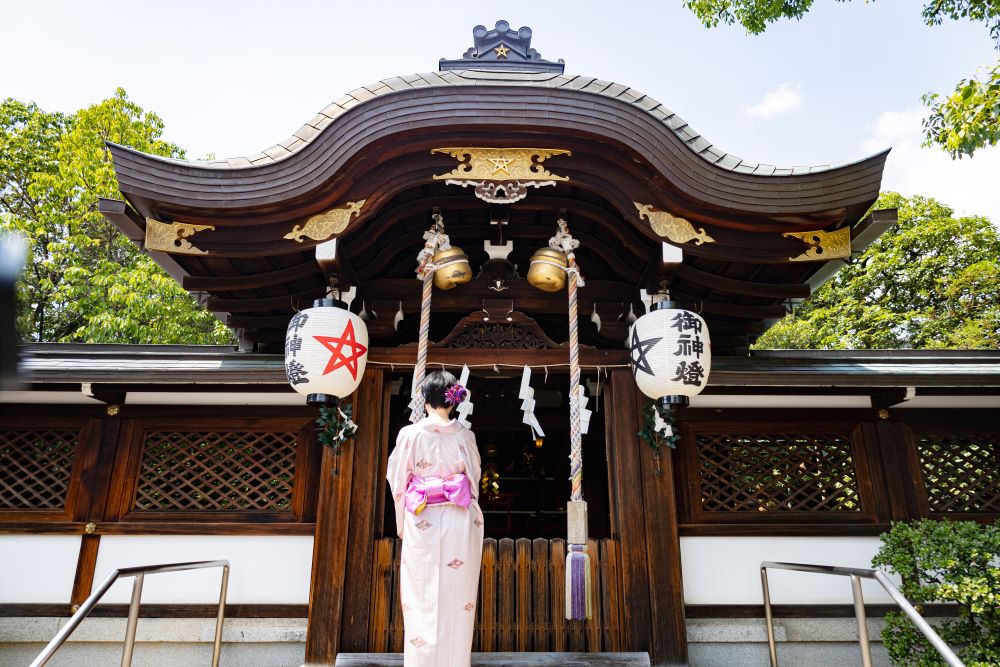
A Beloved Spiritual Spot Honoring the Legendary Onmyoji, Abe no Seimei
Featured in literature, manga, and film, Seimei Shrine is dedicated to Abe no Seimei, a renowned Onmyoji (master of yin-yang divination) in Japanese folklore. Known as a guardian against evil and misfortune, Seimei remains a spiritual figure deeply respected today.
The shrine features unique elements such as the “Sun and Moon Pillars” symbolizing yin and yang, the “Seimei Well” said to have been created through Seimei’s spiritual power, and the “Peach of Protection”—a sacred symbol of warding off bad luck. The shrine also offers omamori charms, seals, and talismans adorned with Seimei’s five-pointed star crest.
| Seimei Shrine Address: 806 Seimei-cho, Kamigyo-ku, Kyoto TEL: 075-441-6460 Hours: 09:00–17:00 HP:https://www.seimeijinja.jp/ |
Nishiki Tenmangu
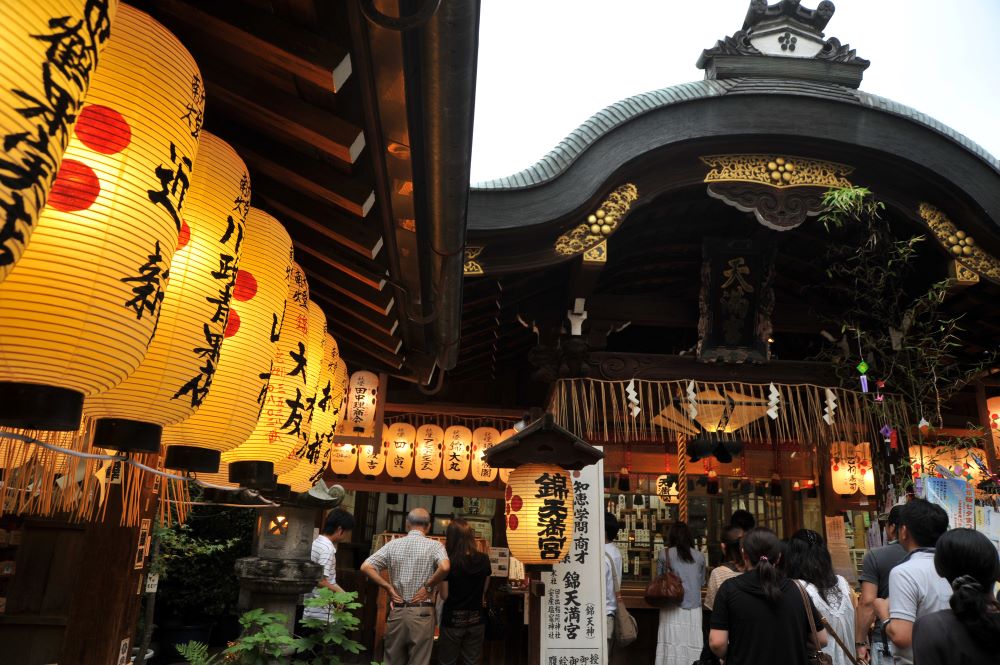
The Guardian of Nishiki Market and Beloved “Tenjin-san” of Kyoto
Nishiki Tenmangu is dedicated to Sugawara no Michizane, the deity of learning, and serves as the guardian shrine of the bustling Nishiki Market just in front of it. It has long been cherished by locals as a place of spiritual support in the heart of downtown Kyoto.
Known for blessings in wisdom, academic success, and good fortune, it is affectionately referred to as “Nishiki no Tenjin-san.” Like Kitano Tenmangu Shrine, it features a sacred cow statue believed to boost intellect when touched. Hello Kitty-themed omamori charms are particularly popular across generations.
| Nishiki Tenmangu Address: 537 Nakanocho, Nakagyo-ku, Kyoto TEL: 075-231-5732 Hours: 08:00–20:00 HP:https://nishikitenmangu.or.jp/en/ |
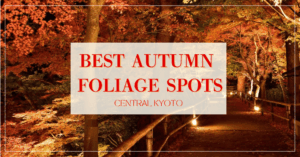
Major Attractions in Eastern Kyoto (Rakuto Area)
The Rakuto area in eastern Kyoto is home to many of the city’s most iconic landmarks, such as Kiyomizu-dera Temple—frequently featured in anime—and Ginkaku-ji Temple, known for its refined, contrasting beauty to Kinkaku-ji. The area also hosts Yasaka Shrine, which plays a central role in Kyoto’s famous Gion Festival.
In addition to its religious and historical significance, the Rakuto district offers some of Kyoto’s most atmospheric streetscapes, including Ninen-zaka, Sannen-zaka, and Hanamikoji Street. Visitors can enjoy the preserved charm of Kyoto’s traditional townhouses and historic alleys as they stroll.
The Kamo River, which runs through this area, is a favorite gathering place for locals. In summer, the riverside terraces—known as “Kawayuka”—offer a signature seasonal dining experience in Kyoto.
This area is ideal for visitors who want to explore Kyoto’s temples and shrines as well as experience the ambiance of its traditional neighborhoods.
Kiyomizu-dera Temple
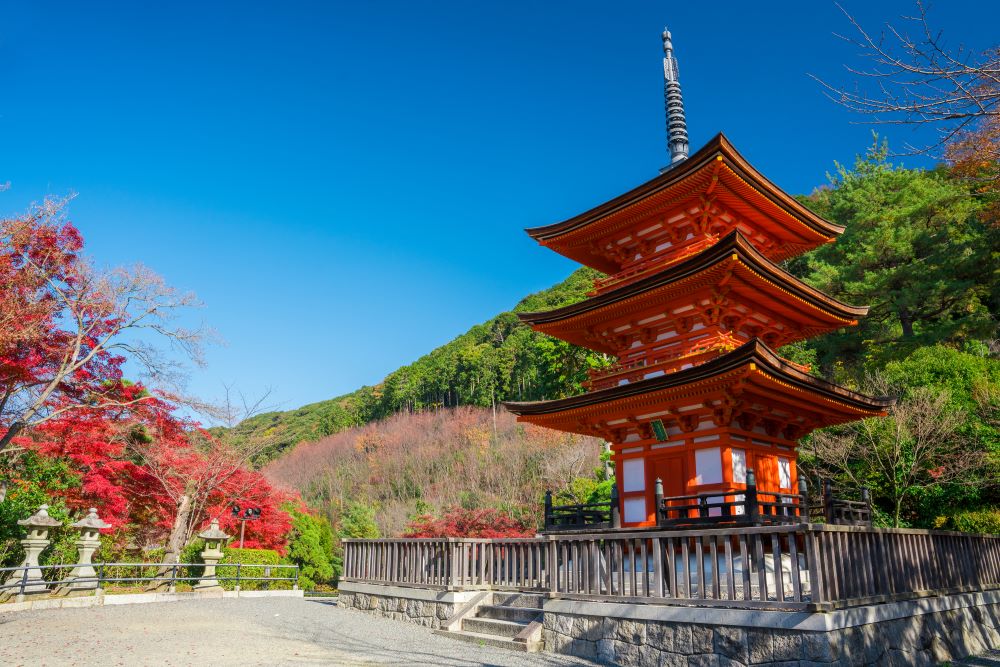
【LIVE】Kyoto Parking in front of Kiyomizu Temple
A Beloved Icon of Kyoto with a View Worth the Leap
Kiyomizu-dera Temple is one of Kyoto’s most iconic temples, known for the expression “to jump off the stage of Kiyomizu,” which means making a bold decision. From the temple’s famous wooden stage, visitors can take in sweeping views of Kyoto and the forested ravine below.
Don’t miss the temple’s striking three-story pagoda—one of the largest in Japan—and its impressive main gate and hall, all of which are designated national treasures. During cherry blossom and autumn foliage seasons, the temple is beautifully illuminated in the evening.
The surrounding lanes, such as Kiyomizu-zaka, Ninen-zaka, and Sannen-zaka, are also prime spots for souvenirs and local snacks.
| Kiyomizu-dera temple Address: 1-294 Kiyomizu, Higashiyama-ku, Kyoto TEL:075-551-1234 Hours:6:00–18:00(Check website for special evening hours) HP:https://www.kiyomizudera.or.jp/en/ |
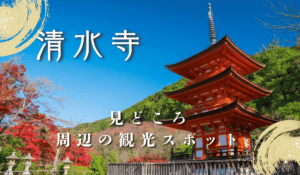
Gion & Hanamikoji Street
The Heart of Kyoto’s Historic Charm and Geisha Culture
Gion is one of Kyoto’s most atmospheric districts, known for its traditional teahouses and geisha culture. Centered around Yasaka Shrine, the area is often referred to as Kyoto’s “Old Town.”
Hanamikoji Street, with its preserved machiya townhouses, is the most famous street in the district and provides a glimpse into Kyoto’s refined cultural heritage. The area is divided into north, east, and west sections, each with its own highlights: Chion-in and Shoren-in temples to the north, the slopes leading to Kiyomizu-dera temple in the east, and Kennin-ji and Yasui Konpiragu Shrine to the west.
You’ll also find many long-established Kyoto brands such as “Yojiya” for oil-blotting papers, “Nishiri” for pickles, and “Tsujiri” for matcha sweets and beverages.
| Gion Shopping Street Promotion Associates Address: 567-6 Gion-cho Minamigawa, Higashiyama-ku, Kyoto TEL: 075-531-2288 Hours & Closures: Vary by shop HP:https://www.gion.or.jp/(Japanese only) |
Yasaka Shrine

From Protection to Romance—The Shrine of Kyoto’s Gion Festival
Yasaka Shrine, located at the eastern end of Shijo Street, is dedicated to Susanoo-no-Mikoto, the deity of warding off evil and disasters. With a history of over 1,300 years, the shrine is beloved for providing blessings in various areas including health, safety at home, academic success, and romantic relationships.
One highlight is the Okuninushisha sub-shrine, which enshrines Okuninushi, a god of matchmaking. Visitors can dedicate their wishes with heart-shaped ema plaques and small rabbit statues representing good luck in love.
The shrine is also the starting point for the famous Gion Festival, one of Japan’s three great festivals. Its grounds are open 24 hours a day, and are beautifully lit up at night—offering a spiritual yet romantic atmosphere.
| Yasaka Shrine Address: 625 Gion-cho Kitagawa, Higashiyama-ku, Kyoto TEL:075-561-6155 Hours Shrine grounds: Open 24 hours Shrine office: 09:00–17:00 HP:https://www.yasaka-jinja.or.jp/en/ |
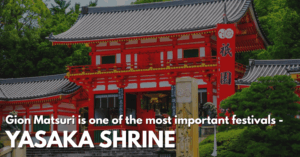
Maruyama Park
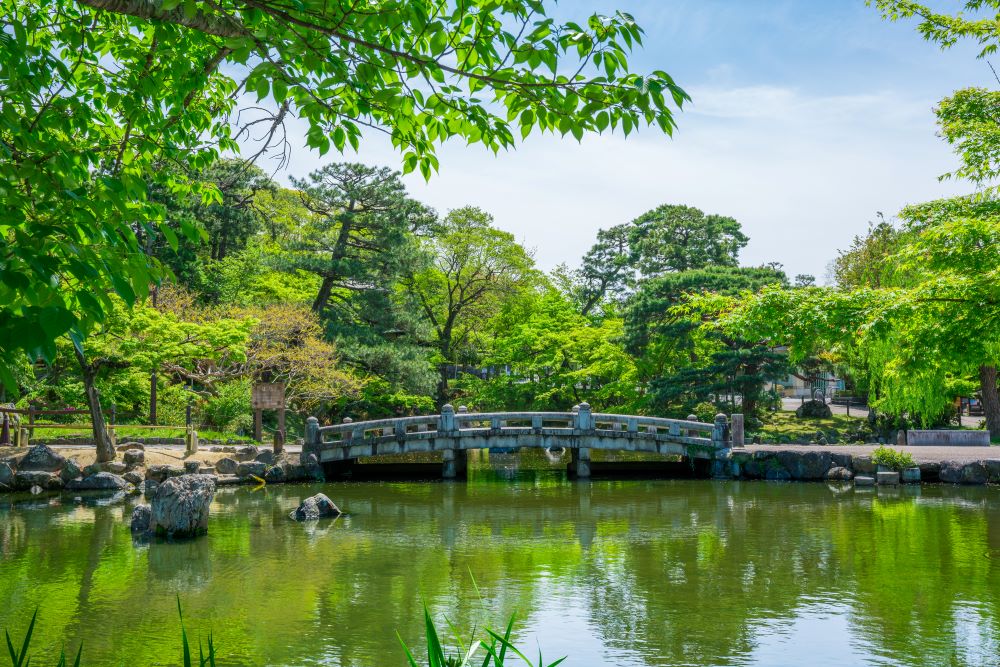
A Beloved Cherry Blossom Spot Anchored by the Gion Weeping Cherry Tree
Maruyama Park is a scenic public park located next to Yasaka Shrine and surrounded by important religious sites like Chion-in and Shōren-in. It is officially designated as a Place of Scenic Beauty by the Japanese government.
At the heart of the park stands the famous Gion Shidare-zakura (weeping cherry tree), which draws crowds of visitors every spring. The tree is especially enchanting when lit up at night during the cherry blossom season.
Maruyama Park also hosts a variety of community events such as markets, history seminars, and walking festivals—making it a relaxing space not only for tourists but also for Kyoto locals.
| Maruyama Park Address: Maruyama-cho, Higashiyama-ku, Kyoto TEL: 075-561-1778 (09:00–17:00) HP:https://kyoto-maruyama-park.jp/(Japanese only) |
Heian Jingu Shrine

A Symbol of Kyoto’s Cultural Renaissance After the Capital Relocated to Tokyo
Heian Jingu Shrine was built in 1895 as part of efforts to revitalize Kyoto after it lost its status as the capital of Japan to Tokyo. The shrine commemorates the city’s long and vibrant history, especially its flourishing Heian period (794–1185).
The vibrant vermilion architecture of the main hall, Daigokuden, and the 33,000-square-meter garden complex known as Shin’en offer a breathtaking look into Japan’s classical aesthetics. The expansive gardens, with their seasonal flowers and ponds, are among Kyoto’s most beautiful.
As of now, a special exhibition allows access to normally closed-off areas until December 29, 2025—don’t miss the chance to explore deeper into Heian Shrine’s sacred grounds.
| Heian Jingu Shrine Address: 97 Nishitenno-cho, Okazaki, Sakyo-ku, Kyoto TEL:075-761-0221 Hours:6:00–18:00(Varies by season; check website for updates) HP:https://www.heianjingu.or.jp/english/ |
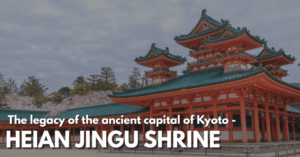
Nanzen-ji Temple

The Pinnacle of Zen Buddhism in Kyoto’s Monastic Landscape
Nanzen-ji Temple is one of the most prestigious temples of the Rinzai school of Zen Buddhism in Japan. Located in Kyoto’s eastern hills, it’s revered not only for its spiritual stature but also for its historic architecture and tranquil gardens.
The temple’s grand Sanmon Gate represents the “Three Gates to Liberation” (emptiness, formlessness, and non-action), essential steps in the path to enlightenment. Its imposing wooden structure captures the essence of Zen strength and simplicity.
Don’t miss the Suirokaku Aqueduct—a striking red-brick, Roman-style bridge that contrasts beautifully with the temple’s Zen surroundings, making it a popular photo spot.
| Nanzen-ji Temple Address: Fukuchicho, Nanzenji, Sakyo-ku, Kyoto TEL:075-771-0365 Hours Dec 1 – Feb 28: 08:40–16:30 Mar 1 – Nov 30: 08:40–17:00 HP:https://www.nanzenji.or.jp/(Japanese only) |
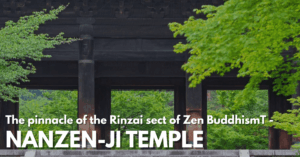
Ginkaku-ji (Silver Pavilion)

Discover Wabi-Sabi Aesthetic in Contrast to the Golden Splendor of Kinkaku-ji
Officially named “Higashiyama Jisho-ji.” The temple originated as the Higashiyama Palace, a mountain retreat built by Ashikaga Yoshimasa, the 8th shogun of the Muromachi shogunate. It was later named after Yoshimasa’s Buddhist name, “Jisho-in.”
Higashiyama refers to the mountain range that stretches along the eastern side of Kyoto, with Mount Daimonji—famous for the “Gozan no Okuribi” fire festival held on August 16—as its central peak.
While Ginkakuji is usually open only for garden viewing, certain buildings such as the Togudo, Hojo, and Rouseitei are specially opened to the public during the spring and autumn seasons.
The Kannonden (Ginkaku) and the Togudo, both located within the garden, are original structures from the Muromachi period. Be sure not to miss either during your visit. The Kannonden (Ginkaku) reflects Yoshimasa’s religious ideals and embodies the essence of Japanese aesthetics through its refined simplicity and the wabi-sabi philosophy of subdued elegance and impermanence.
| Ginkaku-ji Address: 2 Ginkakuji-cho, Sakyo-ku, Kyoto TEL:075-771-5725 Hours March–November: 08:30–17:00 December–February: 09:00–16:30 ※ Please check the website for special openings. HP:https://www.shokoku-ji.jp/en/ginkakuji/(Japanese only) |
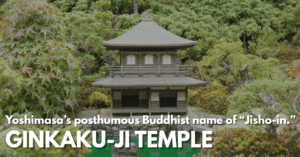
Kodai-ji Temple
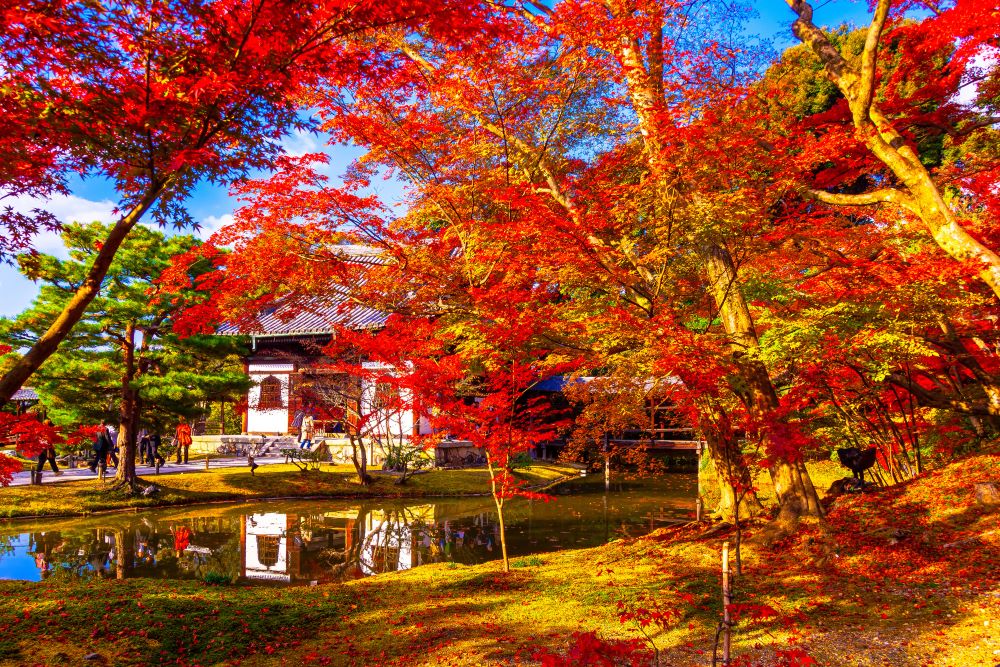
Connecting Past and Future with Zen Gardens and Android Kannon Mindar relates to the Heart of Sutra
Founded by Kita-no-Mandokoro (commonly known as Nene), the widow of Toyotomi Hideyoshi, Kodai-ji Temple honors her late husband and showcases the opulence of the Momoyama period.
The temple complex features numerous cultural treasures, including the mausoleum of Hideyoshi and Nene, Kaizando Hall, and the tearooms Karakasatei and Shiguretei. The Kodai-ji Makie lacquerware—renowned for its intricate designs—is another highlight.
In a unique fusion of tradition and innovation, Kōodai-ji also features “Android Kannon Mindar,” a humanoid robot programmed to give Buddhist teachings. This modern initiative draws global attention and represents a bold step in spiritual outreach.
| Kodai-ji Temple Address: 526 Shimogawara-cho, Kodaiji, Higashiyama-ku, Kyoto TEL: 075-561-9966 Opening hours: 09:00–17:30 Check the official website for seasonal evening viewings. HP:https://www.kodaiji.com/(Japanese only) |
Nene’s Path
A Charming Cherry Blossom Lane Steeped in History
Nene’s Path is a picturesque, 500-meter stone-paved path stretching from Maruyama Park to Kodai-ji Temple’s southern gate. The path is named after Kita-no-Mandokoro, or “Nene,” the wife of Toyotomi Hideyoshi, who spent her later years at Entoku-in Temple, located along this very street.
The area is renowned for its traditional atmosphere, lined with historical shops, tea houses, and restaurants serving Kyoto cuisine and sweets. In spring, the cherry blossoms from nearby Kodai-ji Park make it a popular hanami (flower viewing) destination.
| Nene’s Path Location: Higashiyama Ward, Kyoto City HP:https://kyoto-ankyo.com/column/202303kamikurodakibunesenn.html(Japanese only) |
Philosopher’s Path
A Tranquil Stroll Through Kyoto’s Introspective Side
Stretching approximately 2 kilometers from Ginkaku-ji Temple in the north to Nanzen-ji Temple and Nyakuoji Shrine in the south, the Philosopher’s Path runs along the canal fed by Lake Biwa.
This serene walkway is famous for its seasonal beauty—cherry blossoms in spring and vibrant foliage in autumn. It is named after Kyoto University philosophy professor Nishida Kitaro, who used this path for daily meditation walks.
The literary atmosphere of the trail has earned it a place on Japan’s list of “100 Most Scenic Roads.” Temples such as Nanzen-ji and Eikando line the route, along with small cafés and souvenir shops, making it ideal for a leisurely, reflective stroll.
| Philosopher’s Path Location: Sakyo Ward, Kyoto City |
Eikando (Zenrin-ji Temple)
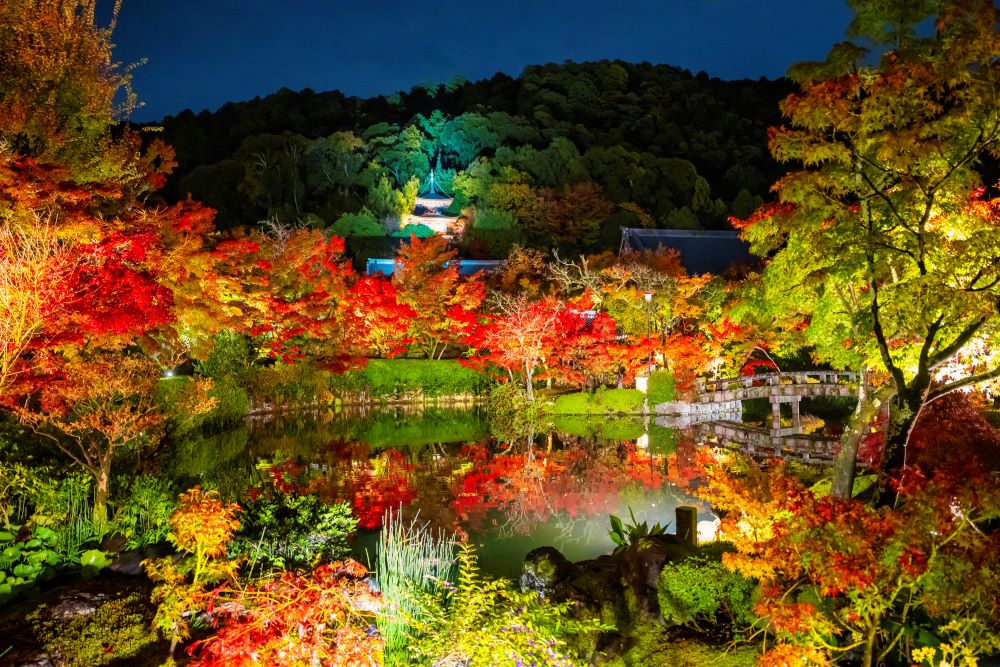
Eikando: A Temple of Over a Thousand Years Known for Autumn Leaves
Eikando, officially known as Zenrin-ji Temple, is renowned as one of Kyoto’s most famous spots for autumn foliage. Its 1,000-year history and stunning grounds—home to around 3,000 maple trees—make it a must-visit during the fall season.
A highlight of your visit is the statue of the Mikaeri Amida Nyorai (Amitabha looking back), enshrined in the Main Hall. During the limited-time autumn night illuminations, the vibrant reds of the maple leaves and the golden glow of the temple buildings create a magical and unforgettable scene.
| Eikando (Zenrin-ji Temple) Address: 48 Eikando-cho, Sakyo Ward, Kyoto TEL: 075-761-0007 Opening hours: 9:00–17:00 For details on special evening visits, please refer to the official website. HP:https://www.eikando.or.jp/English/index_eng.html |
Okazaki Shrine
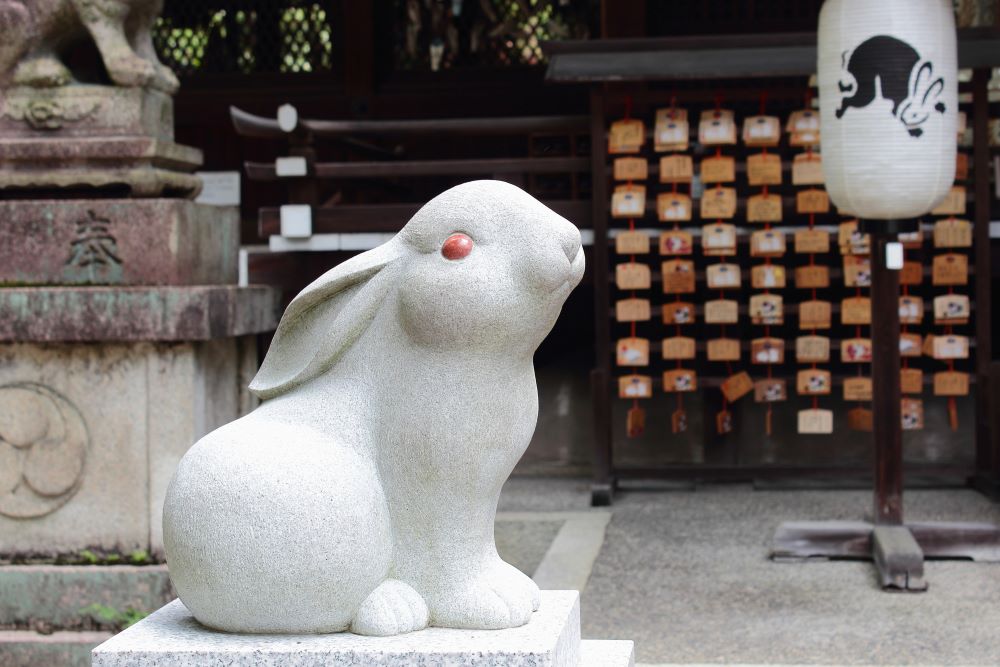
A Shrine of Fertility and Safe Childbirth, Adorned with Charming Rabbits
Originally built in 794 as one of four protective shrines marking the corners of the newly established capital, Heian-kyo, Okazaki Shrine is located in the east and was once known as Higashi Tenno (Eastern Heavenly King Shrine).
The shrine is especially revered as a place to pray for fertility and safe childbirth, as the two deities enshrined here are said to have had three daughters and five sons. In addition, wild rabbits were once abundant in the area and, due to their association with fertility, have been regarded as sacred messengers of the gods.
A longstanding custom encourages visitors praying for a safe delivery to bring a maternity belt (haramaki) for a blessing. The shrine grounds are also filled with rabbit-themed statues, ema (votive plaques), and protective charms, all beloved for their adorable appearance.
| Okazaki Shrine Address: 51 Okazaki Higashi Tennocho, Sakyo-ku, Kyoto City, Kyoto Prefecture TEL: 075-771-1963 HP:https://okazakijinja.jp/(Japanese only) |
Chion-in
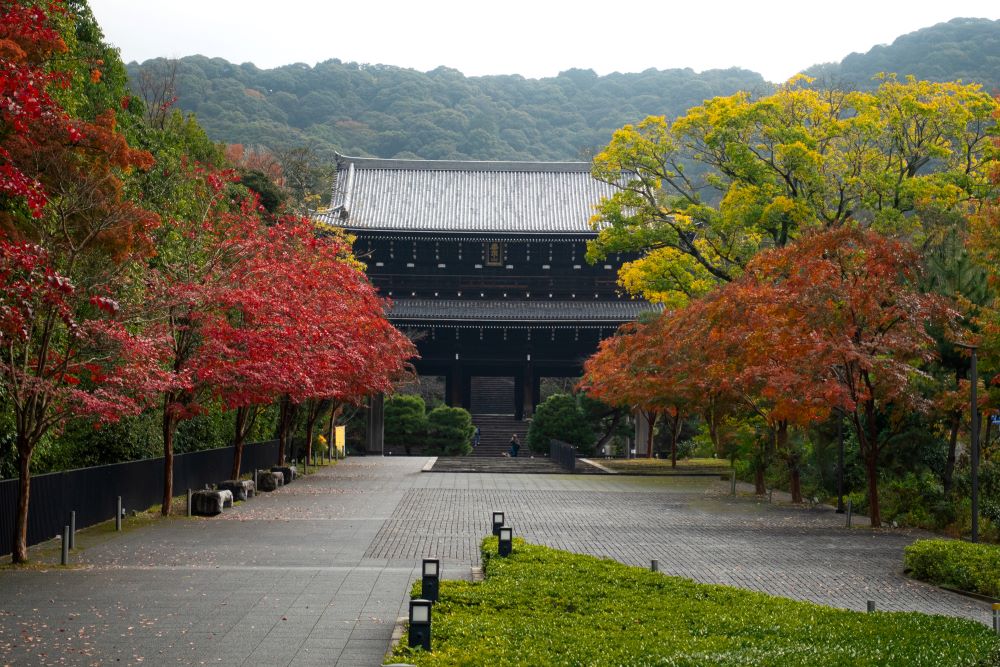
The Head Temple of the Jodo Sect with Over 800 Years of History
Founded by the revered Buddhist monk Honen, who taught that salvation could be attained by chanting the Nembutsu (“Namu Amida Butsu”), Chion-in serves as the head temple of the Jodo sect.
In an age plagued by civil wars, famines, and natural disasters, Honen’s message offered hope and became a deeply rooted faith among the people.
The temple grounds feature multiple cultural treasures, including the Sanmon gate—Japan’s largest wooden two-story gate—and the Mieido Hall, where Honen’s image is enshrined. In autumn, Chion-in becomes a famous spot for fall foliage, with evening illuminations casting a magical glow over the Yuzen-en Garden, Sanmon, Onnazaka, and Miei-do.
| Chion-in Address: 400 Rinka-cho, Higashiyama-ku, Kyoto City, Kyoto Prefecture TEL: 075-531-2111 Opening hours: 5:30–16:00 HP:https://www.chion-in.or.jp/en/ |
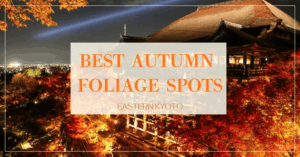
Highlights of Western Kyoto (Rakusai Area)
The Rakusai area in western Kyoto is rich in World Heritage sites such as Kinkaku-ji and Tenryu-ji Temple, while also offering the natural beauty of Arashiyama, the Bamboo Grove Path, the Sagano Romantic Train, and Hozugawa River Boat Ride.
It’s a perfect area for travelers who enjoy history, nature, scenic views, and sightseeing trains.
Arashiyama & Togetsukyo Bridge
A Timeless Symbol of Kyoto’s Beauty Through the Seasons
Arashiyama is one of Kyoto’s most iconic scenic spots, celebrated for its breathtaking seasonal landscapes.
Togetsukyo Bridge, which spans the Katsura River, has become the symbolic heart of Arashiyama. Its name, meaning “Moon-Crossing Bridge,” is said to have come from Emperor Kameyama in the Kamakura period, who likened the scene to the moon gliding across the sky.
Whether you view the bridge from afar or walk across it while listening to the river’s gentle sounds, it offers a peaceful and memorable experience. The bridge’s cypress railings were designed to blend harmoniously with the surrounding nature, which changes dramatically throughout the year—from cherry blossoms in spring, vibrant foliage in autumn, to snow-covered scenery in winter.
The nearby Arashiyama shopping street is also worth exploring, with popular stops like the Yojiya Café and Miffy Sakura Kitchen & Bakery, offering plenty of options for dining and souvenirs.
| Togetsukyo Bridge Location: 1-5, Saga Tenryuji Susukinobabacho, Ukyo-ku, Kyoto Accessible 24 hours |
| Arashiyama Shopping Street Address: Sagatenryuji Tsukurimichi-cho, Ukyo-ku, Kyoto HP:https://sagaarashiyama.jp/official/ |
Kinkaku-ji (Golden Pavilion)

A Golden Vision of the Pure Land, Commissioned by Ashikaga Yoshimitsu
Built by Ashikaga Yoshimitsu, the third shogun of the Muromachi shogunate, Kinkaku-ji is one of Kyoto’s most iconic temples. Its official name is Rokuon-ji.
This Zen Buddhist temple is a symbol of the flourishing Kitayama culture, which was deeply influenced by Japan’s trade with China during Yoshimitsu’s reign. The main structure, known as the Golden Pavilion (Shariden), is entirely covered in gold leaf and glows brilliantly in the sunlight.
On clear days, the pavilion’s reflection in the surrounding pond is just as stunning as the structure itself, creating a truly paradise-like atmosphere that reflects the Pure Land of Buddhist imagination.
Beyond the pavilion, highlights include the Dragon Gate Waterfall (Ryumonnotaki) and the Koi Stone (Rigyoseki) , inspired by a Chinese legend where a carp becomes a dragon by leaping up a waterfall—symbols of success and good fortune.
| Kinkaku-ji Address: 1 Kinkakujicho, Kita-ku, Kyoto TEL:075-461-0013 Hours: 09:00–17:00 HP:https://www.shokoku-ji.jp/en/kinkakuji/ |
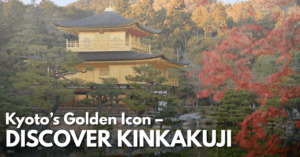
Tenryu-ji Temple

The Supreme Zen Temple, Ranked First Among Kyoto’s Five Great Zen Temples
Tenryu-ji, located near Togetsukyo Bridge, Kameyama Park, and the Bamboo Grove Path, is one of the most prestigious Zen temples in Kyoto. It was established in 1339 by the shogun Ashikaga Takauji to honor Emperor Go-Daigo, and its construction was funded through trade with China during the Muromachi period.
Thanks to this support, Tenryu-ji came to occupy the top position among the Kyoto Gozan—the Five Great Zen Temples of Kyoto. It remains a central figure in Japan’s Zen Buddhist tradition.
Within the temple grounds, visitors will also find Hogon-in, a sub-temple known for its spectacular autumn foliage. During the fall season, the temple hosts special nighttime openings, during which the famous Shishiku Garden is illuminated—offering a dreamlike, atmospheric experience distinct from daytime visits.
| Tenryu-ji Temple Address: 68 Saga Tenryuji Susukinobabacho, Ukyo-ku, Kyoto TEL:075-881-1235 Hours: 08:30–17:00 ※ Special early-morning viewing may be available. Please check the website. HP:https://www.tenryuji.com/en/ |
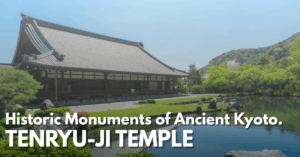
Bamboo Grove Path
A Breathtaking Bamboo Forest—A Must-See in Arashiyama
No visit to the Arashiyama area is complete without a stroll through the Bamboo Grove Path. Towering stalks of bamboo stretch skyward on both sides of the path, creating a tranquil green tunnel that transports visitors away from the city’s bustle into a world of calm and beauty.
In the late afternoon, the sunlight filtering through the bamboo creates a sparkling interplay of light and shadow—one of the grove’s most stunning sights.
The bamboo scenery changes beautifully with each season: fresh green in spring, deep emerald in summer, golden hues in autumn, and a frosty white landscape in winter.
To make the most of your visit, consider hiring a traditional jinrikisha (rickshaw), which offers a unique and immersive way to experience the grove.
| Bamboo Grove Path Location:Ogurayama Tanaka Yamaguchi-cho, Saga, Ukyo-ku, Kyoto Open 24 hours |
Jojakko-ji Temple
A Scenic Temple on Mount Ogura, Celebrated for Autumn Foliage and Literary Heritage
Located halfway up Mount Ogura—famous from the Hyakunin Isshu, a classic anthology of one hundred poems by one hundred poets—Jojakko-ji Temple is renowned for its tranquil setting and vibrant autumn colors.
The main hall was originally part of Fushimi Castle, constructed by Toyotomi Hideyoshi and later rebuilt by Tokugawa Ieyasu. The building was relocated here, adding historical depth to the temple grounds.
One of the highlights is the Niomon Gate, which was moved from Honkoku-ji Temple. Framed by fluttering maple leaves in autumn, it’s a picture-perfect scene that captures the essence of Kyoto’s seasonal charm.
| Jojakko-ji Temple Address: 3 Ogurayama Oguracho, Sagano, Ukyo-ku, Kyoto TEL: 075-861-0435 Opening hours: 9:00–17:00 HP:https://jojakko-ji.or.jp/ |
Nonomiya Shrine
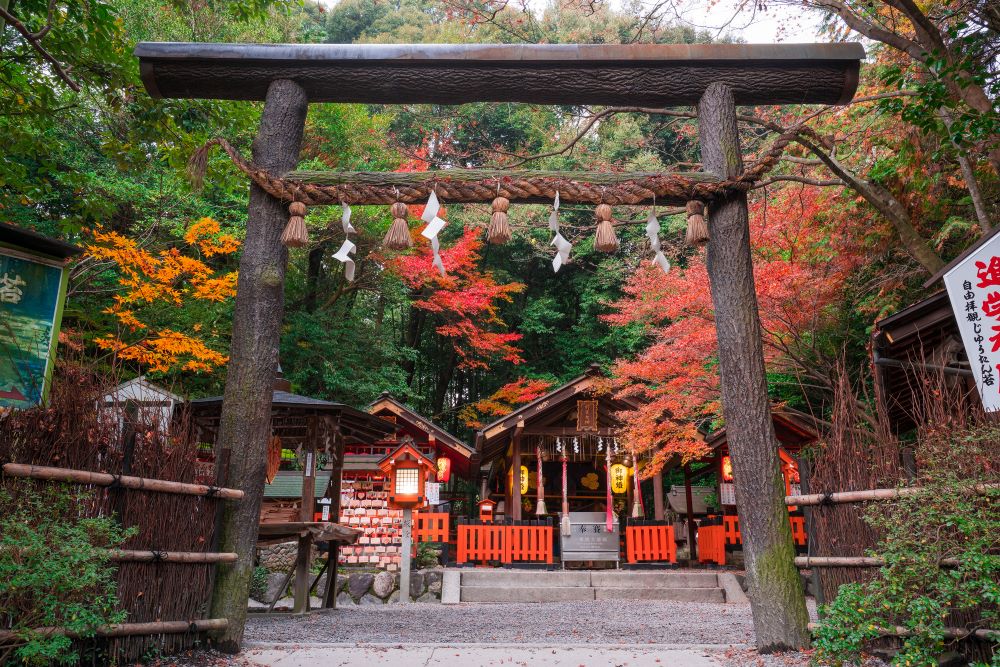
A Sacred Site of Purification and Blessings, Nestled in the Bamboo Grove
Nonomiya Shrine is tucked within the Arashiyama Bamboo Grove and is dedicated to deities of matchmaking, fertility, and academic success.
In ancient times, imperial princesses destined to serve at the Ise Grand Shrine would first undergo a period of purification here before their journey. This historical connection gives the shrine a particularly spiritual atmosphere.
The site is also famous for its kuroki torii, a unique black-painted sacred gate made from unbarked logs—believed to be the only one of its kind in Japan. The simple wooden fences and natural surroundings evoke the elegance described in classical literature, including The Tale of Genji.
Visitors come to touch the “Wish-Granting Stone”, a sacred stone said to fulfill heartfelt prayers, and admire the “Moss Garden Carpet”, a tranquil green space that reflects the natural beauty of Arashiyama.
| Nonomiya Shrine Address: 1 Saga Tenryuji Tateishicho, Ukyo-ku, Kyoto HP:http://www.nonomiya.com/eng.html |
Sagano Romantic Train (Torokko Train)

A Nostalgic Journey Through the Changing Seasons of the Hozugawa Gorge
The Sagano Romantic Train—affectionately known as the Torokko Train—offers a slow and scenic ride through the Hozukyo Gorge, showcasing Kyoto’s natural beauty as it transforms through the seasons.
Originally used for cargo transport, the retro-style diesel-powered cars now carry passengers along a former railway route, providing breathtaking views of cherry blossoms in spring, lush greenery in summer, colorful foliage in autumn, and snow-dusted scenery in winter.
For the most immersive experience, ride the open-air “Rich Car” with no glass windows. You’ll feel the breeze, hear the river, and fully take in the sights, sounds, and even the scents of the surrounding nature.
During cherry blossom and fall foliage seasons, the gorge is illuminated at night, creating a magical tunnel of light—a must-see for seasonal visitors.
| Sagano Romantic Train TEL:075-861-7444 Operating Hours: ・Torokko Saga Station: from 08:35 (09:35 on certain days) ・Torokko Arashiyama Station: from 08:50 (09:50) ・Torokko Kameoka Station: from 09:10 (10:10) Closed: Wednesdays Fares: Adults ¥880 / Children ¥440 HP:https://www.sagano-kanko.co.jp/en/ RESERVATION |
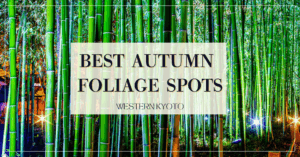
Major Attractions in Southern Kyoto (Rakunan Area)
The Rakunan area in southern Kyoto is home to some of the city’s most iconic cultural landmarks, including Fushimi Inari Taisha, famous for its thousands of vermillion torii gates, and Byodo-in Temple, which appears on the Japanese 10-yen coin.
Because it borders Uji City, the region is also known for its rich matcha culture, with plenty of sweets and cafes featuring high-quality green tea.
This area is especially appealing to those interested in Japan’s cultural and literary heritage. It’s dotted with locations tied to The Tale of Genji as well as historically significant sites from the late Edo period, such as Teradaya Inn and Ryoma Street Shopping District, which are associated with Sakamoto Ryoma and the Meiji Restoration.
Fushimi Inari Taisha
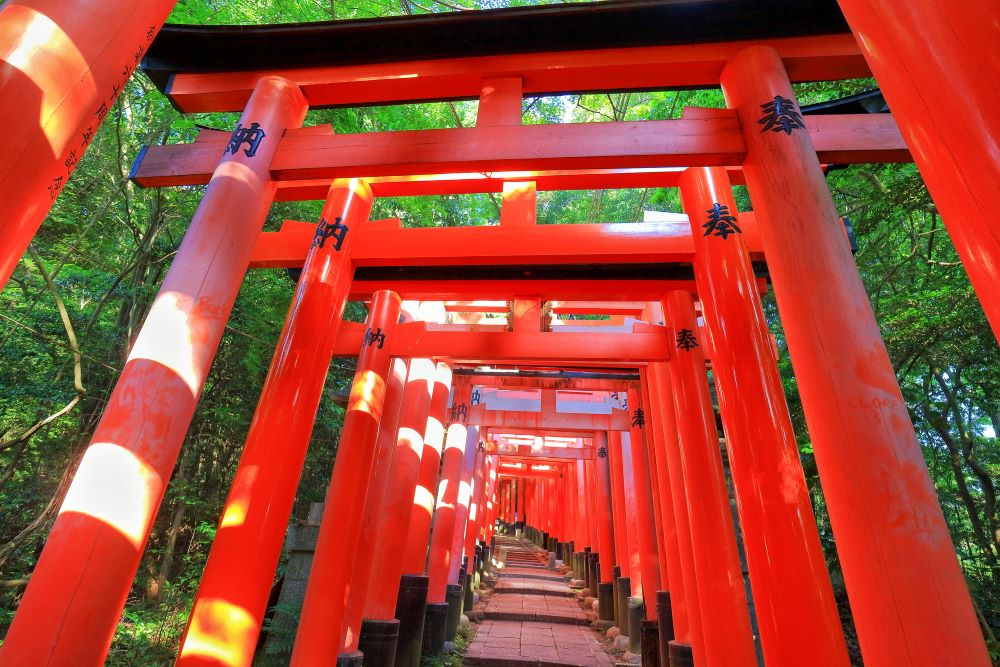
More Than Just a Thousand Torii—The Head Shrine of Inari Across Japan
Founded over 1,300 years ago, Fushimi Inari Taisha is the head shrine of approximately 30,000 Inari shrines throughout Japan. It is one of Kyoto’s most iconic spiritual destinations.
Worshipped for blessings of abundant harvests, business prosperity, household safety, and wish fulfillment, the shrine’s sacred grounds extend across the base and summit of Mount Inari. The complex includes the main shrine building (honden), the famed Senbon Torii (“thousand torii gates”), and smaller shrines all the way to the mountain’s peak.
If you’re short on time, the most popular route—through the grand romon gate, past the main hall, and through the Senbon Torii to the Okuno-in (Okusha Hohaisho)—can be completed in under an hour.
Don’t miss the Omokaru Stone at the Inner Shrine. To try it, silently make a wish, then lift one of the paired lantern tops. If it feels lighter than expected, your wish is said to come true; if heavier, it may require more effort or patience.
| Fushimi Inari Taisha Address: 68 Fukakusa Yabunouchi-cho, Fushimi-ku, Kyoto TEL:075-641-7331 Hours Grounds: Open 24 hours Prayer services:8:30–16:30 HP:https://inari.jp/en/ |
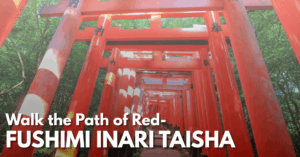
Tofuku-ji Temple

Kyoto’s Largest Zen Temple Complex and a Renowned Spot for Autumn Leaves
Named by combining characters from two major Nara temples—Todai-ji and Kofuku-ji—Tofuku-jiTemple was built as Kyoto’s largest Zen temple complex. Though it suffered multiple fires during its early construction, it was eventually restored and now stands as a testament to the austere beauty of Zen architecture and traditional wooden structures.
Tofuku-ji Temple is particularly famous for its vivid autumn colors, especially at the Tentokuin sub-temple, which opens to the public only during the blooming of bellflowers in summer and the changing leaves in fall.
During the special autumn viewing period, the gates open from 9:00, allowing early visitors to enjoy the crimson maple leaves while sipping matcha or enjoying a light lunch.
| Tofukuji Temple Address: 15-778 Honmachi, Higashiyama-ku, Kyoto Hours:8:30–16:00 (May vary by season) HP:https://tofukuji.jp/guide/tour/en/ |
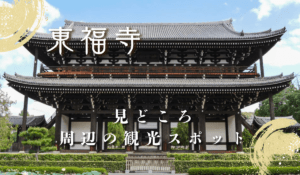
To-ji Temple

Japan’s First Esoteric Buddhist Temple, with a 1,200-Year History
Officially named Kyo-o Gokoku-ji, To-ji Temple was established in 796 as the only remaining temple of the original two that were founded alongside the capital city of Heian-kyo (present-day Kyoto). In 823, it was granted to the great monk Kobo Daishi (Kukai), who introduced Shingon Esoteric Buddhism to Japan.
At the heart of the temple lies the Lecture Hall (Kodo), which houses a three-dimensional mandala centered on the deity Dainichi Nyorai (Vairocana Buddha), embodying the teachings of Esoteric Buddhism.
The temple grounds also feature Japan’s tallest wooden structure—the iconic Five-Story Pagoda, a symbol of Kyoto—along with the stately South Gate (Nan-daimon) adorned with intricate details.
In spring and autumn, the pagoda is beautifully illuminated at night, creating a stunning contrast with cherry blossoms or autumn foliage.
The Mandala Hall and its statues are not usually open to the public, but during special seasonal exhibitions at the Treasure Hall, visitors can view rare works including a Thousand-Armed Kannon and other Buddhas from the mandala.
| Toji Temple Address: 1 Kujō-cho, Minami-ku, Kyoto TEL:075-691-3325 Hours Kondo and Kodo: 08:00–17:00 Kanchi-in: 09:00–17:00 ※ For seasonal evening illuminations or special nighttime viewing, please check the official website. HP:https://toji.or.jp/(Japanese only) ※Toji Kobo Market:http://www.touji-ennichi.com/info/tohji_e.htm |
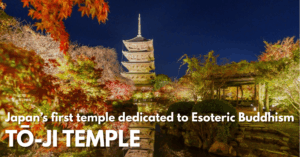
Daigo-ji Temple
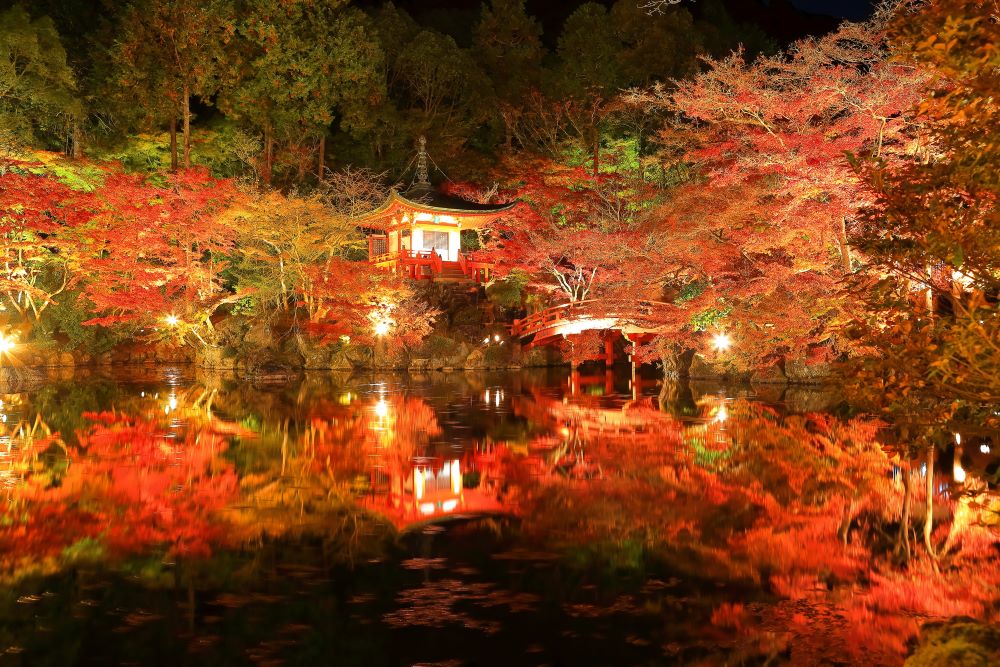
A Temple Beloved by Toyotomi Hideyoshi, Famed for Its Cherry Blossoms and Autumn Leaves
Founded in 874 by Rigen Daishi, a disciple of Kobo Daishi, Daigo-ji spans the entire Mount Daigo, encompassing both Upper Daigo and Lower Daigo within a vast 2-million-square-meter precinct.
The Five-Story Pagoda, built in 951, is the oldest wooden structure in Kyoto Prefecture. Its interior wall paintings are said to be the origin of Japanese Esoteric Buddhist art.
Nicknamed “Flowering Daigo,” the temple is renowned for its cherry blossoms and autumn foliage. Toyotomi Hideyoshi famously hosted a grand cherry blossom viewing here in spring. Though he passed before realizing his dream of an autumn celebration, the legacy of Daigo’s seasonal beauty lives on.
| Daigo-ji Temple Address: 22 Daigo Higashi Oji-cho, Fushimi-ku, Kyoto TEL: 075-571-0002 Hours: ・March 1 to the first Sunday of December: 9:00–17:00 ・From the day after the first Sunday in December to the end of February: 9:00–16:30 (For nighttime special viewings, check the official website.) HP:https://www.daigoji.or.jp/en/ |
Iwashimizu Hachimangu Shrine
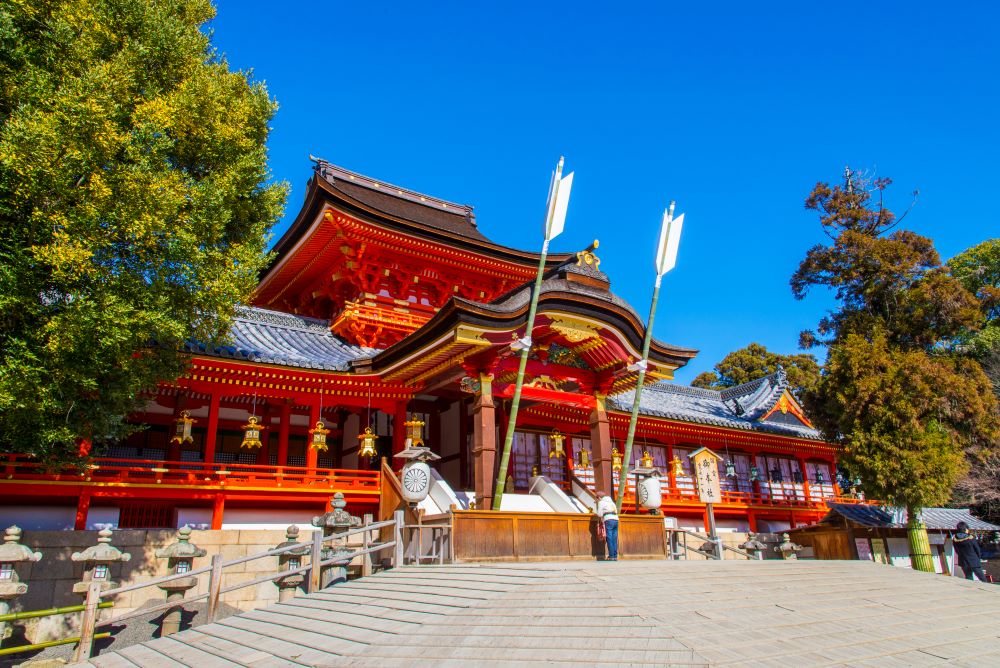
A Revered Guardian Shrine Known for Protection and Good Fortune
Located on Mount Otokoyama, a strategic point between Kyoto and Osaka, Iwashimizu Hachimangu has long been venerated by both the imperial court and commoners as a guardian of the capital and a protector of the nation. Locally, it’s affectionately known as Iwata no Hachiman-san and revered as a shrine for warding off misfortune.
The vivid vermilion buildings—including the main hall, tower gate, and other structures—are built in the largest and oldest form of Hachiman-zukuri architecture. Many of them are designated National Treasures of Japan.
The shrine is also steeped in cultural lore: it appears in Yoshida Kenko’s classical essay Tsurezuregusa, and it’s said that the famous inventor Thomas Edison was inspired by bamboo from this mountain when creating the filament for the electric lightbulb.
Additionally, the Shokado Bento—a traditional multi-compartment bento box used in refined Kyoto cuisine—also traces its origin to the area associated with the shrine.
| Iwashimizu Hachimangu Shrine Address: 30 Yawata Takabo, Yawata City, Kyoto Prefecture TEL: 075-981-3001 Hours: ・Main Gate: 6:00–18:00 ・Amulet & Blessing Office: 9:00–16:00(Hours may vary during New Year holidays) HP:https://iwashimizu.or.jp/(Japanese only) |
Ujigami Shrine
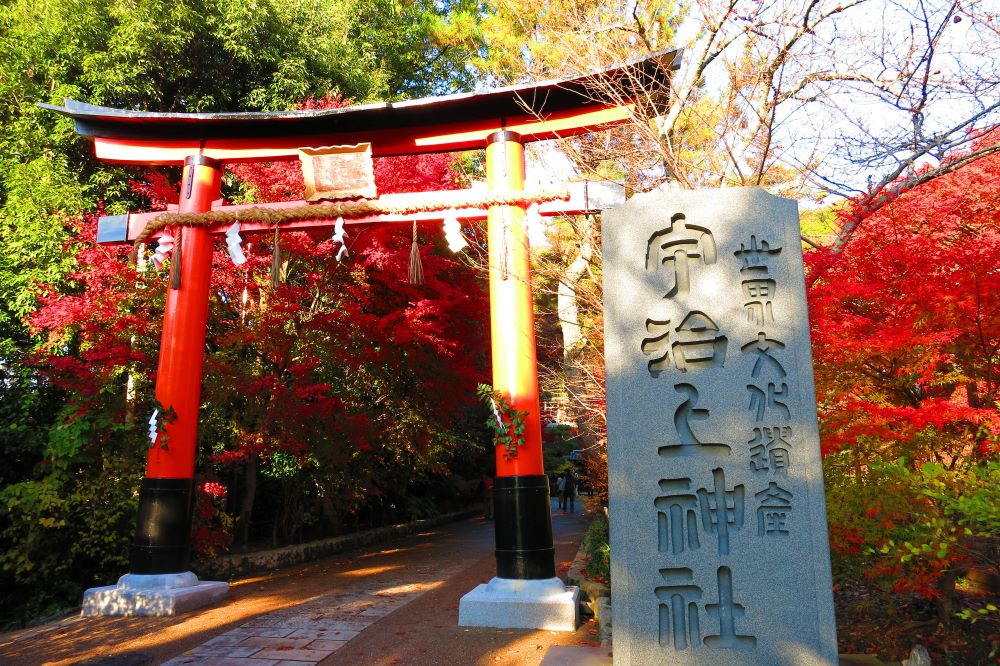
A UNESCO World Heritage Site and One of the Oldest Shinto Shrines in Japan
Located in the tranquil, matcha-famous city of Uji, Ujigami Shrine is a historic and sacred place. The serene and atmospheric Honden (main hall), designated a National Treasure, dates back to the Heian period and is said to be the oldest existing Shinto shrine structure in Japan.
The spacious shrine grounds exude a pure, spiritual energy that calms the mind and uplifts the soul. In spring, cherry blossoms add delicate color, while autumn brings brilliant red foliage. Even the shrine’s goshuin (temple stamps) change colors to reflect the seasons—an added delight for visitors.
| Ujigami Shrine Address: 59 Uji Yamada, Uji City, Kyoto Prefecture TEL: 0774-21-4634 HP:https://www.ujikamijinja.jp/(Japanese only) |
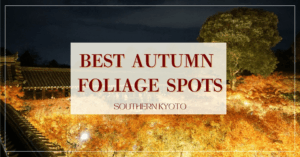
Major Attractions in Northern Kyoto (Rakuhoku Area)
The Rakuhoku area in northern Kyoto is home to scenic spots like Mount Kurama and the Kifune River. In summer, it becomes especially popular for kawadoko dining—an experience where guests enjoy seasonal meals on raised platforms built directly over the flowing river.
Among its spiritual highlights are Kurama-dera Temple, nestled in a mystical forest setting, and Kifune Shrine, whose bright vermilion lanterns stand out beautifully against the deep green of the surrounding trees. Both are renowned as powerful spiritual energy spots.
This area is ideal for travelers planning a week-long stay in Kyoto or for those visiting during the warmer months and looking to experience the region’s refreshing natural beauty.
Kifune Shrine
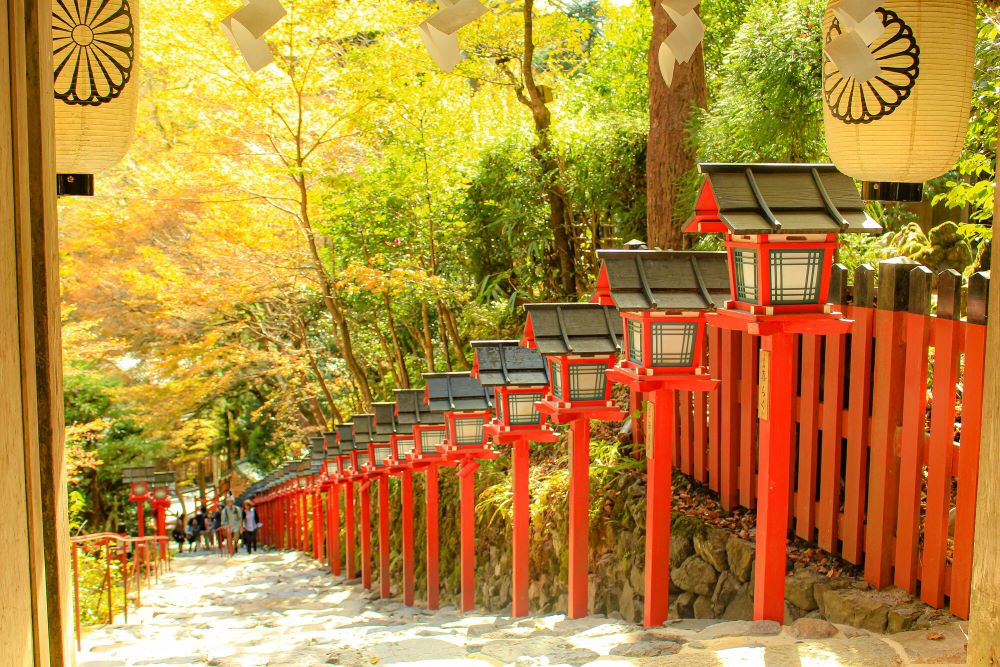
Kifune Shrine: A Sacred Place Surrounded by Nature, Honoring the God of Water
Located deep in the forested hills north of Kyoto, Kifune Shrine is dedicated to Takaokaminokami, the deity of water mentioned in ancient Japanese texts like the Kojiki and Nihon Shoki. Historically, the Imperial Court would pray here for rain during droughts or to stop rain during extended wet spells, earning the shrine great reverence over the centuries.
The shrine is especially known for its “Mizuura-mikuji”, a unique type of fortune slip that reveals your fortune only after being floated on the sacred spring water flowing through the grounds.
In summer, Kifune’s riverside dining platforms—known as “Kawadoko”—offer a cool escape from the city’s heat. These tatami platforms are set right above the flowing river, allowing you to dine while enjoying the soothing sounds of nature—a quintessential Kyoto summer experience.
The approach to the shrine, lined with vivid red lanterns and stone steps nestled among towering trees, creates a mystical atmosphere. Kifune Shrine is also considered a spiritual power spot, attracting those seeking purification and divine blessings.
| Kifune Shrine Address: 180 Kuramakibune-cho, Sakyo Ward, Kyoto TEL: 075-741-2016 Opening hours: 6:00–20:00 HP:https://kifunejinja.jp/en/ |
Kurama-dera Temple
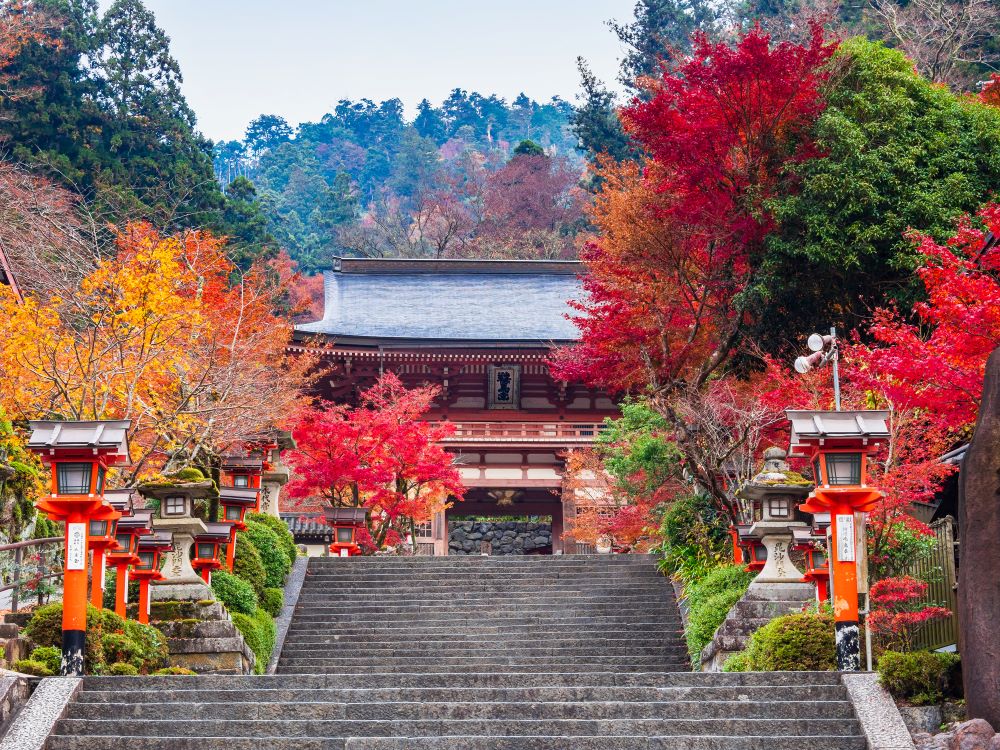
Kurama-dera: A Spiritual Retreat Embraced by Nature and Cosmic Energy
Kurama-dera is a revered temple located on Mt. Kurama, a sacred mountain with over 1,200 years of history. It is widely known as a spiritual power spot where visitors can feel the vitality of nature and the universe, centered on the temple’s unique “Sonten” (尊天) belief—a concept that worships the cosmic energy that gave birth to all life.
This temple also has literary significance, being mentioned in classic works like The Pillow Book and The Tale of Genji. It is also famed as the childhood training ground of Minamoto no Yoshitsune (known in youth as Ushiwakamaru).
Upon passing through the Niomon Gate—the entrance to Mt. Kurama—you will arrive at the temple’s spiritual heart: the Main Hall (Kondō) and the “Kongosyo” (Power Spot). Here, a celestial mandala symbolizing Sonten is etched into the ground, inviting visitors to stand at its center and meditate, absorbing the energy of the universe.
| Kurama-dera Temple Address: 1074 Kurama Honmachi, Sakyo Ward, Kyoto TEL: 075-741-2003 Opening hours: ・Main Hall: 9:00–16:15 ・Cable Car: 8:40–16:25 HP:https://www.kuramadera.or.jp/(Japanese only) |
Sanzen-in Temple
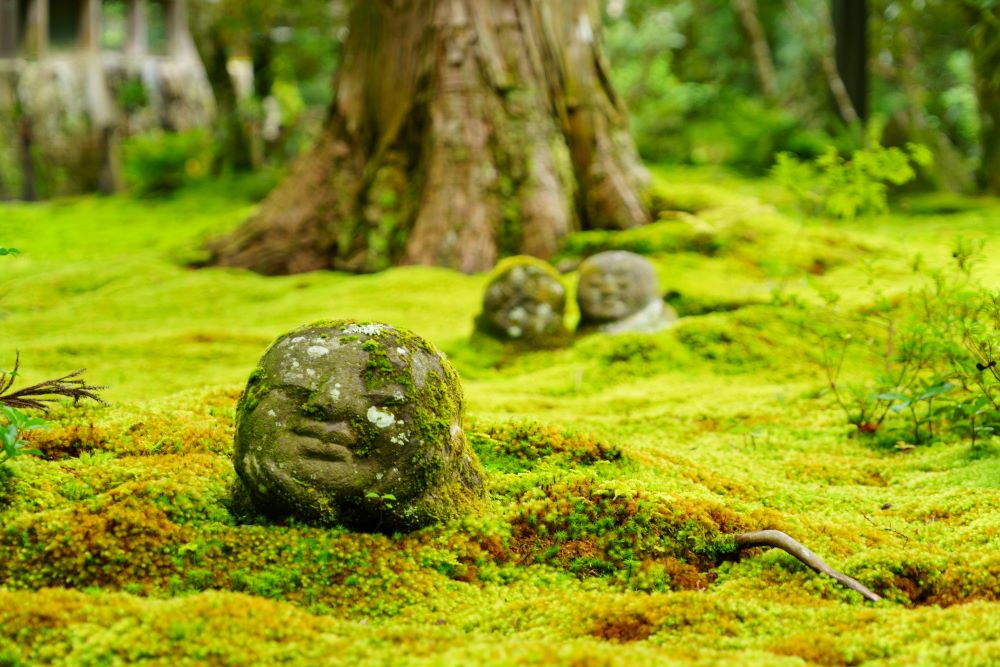
Sanzen-in: A Thousand Years of Tranquility and the Charm of Smiling Jizo Statues
Sanzen-in was originally founded by Saicho, the founder of the Tendai sect, as a hermitage around 782–806. Nestled in the peaceful village of Ohara, it is known for its lush moss gardens and tranquil ambiance.
At the heart of the temple lies the Ojo Gokuraku-in Hall, designated as an Important Cultural Property. Its interior features a ceiling designed in the shape of an inverted boat, and it houses a large triad of Amida Buddha statues. The depiction of celestial maidens dancing across the ceiling gives a vivid sense of the Pure Land paradise.
Another highlight is the Yuseien Garden, where you’ll find a scattering of adorable “Warabe Jizo” (childlike Jizo statues) peeking through the moss. Their gentle expressions and whimsical poses never fail to soothe the hearts of visitors.
| Sanzen-in Temple Address: 540 Raigoin-cho, Ohara, Sakyo Ward, Kyoto TEL: 075-744-2531 Opening hours: 9:00–17:00 HP:http://www.sanzenin.or.jp/en/ |
Rurikoin

Rurikoin: A Jewel of Tranquility in the Foothills of Mt. Hiei
Located in Yase, at the foot of Mt. Hiei, Rurikoin is a secluded temple renowned for its lush moss gardens and seasonal maple trees. The name “Rurikoin” (literally “Lapis Lazuli Temple”) comes from the way the temple grounds shine in a deep blue hue—evoking the Buddhist paradise known as the Pure Land.
Rurikoin is open to the public only during limited periods in spring, summer, and autumn. Visitors can admire the meticulously landscaped Ruri Garden and Garyu Garden, stroll through serene corridors, and enjoy tea at the elegant Kikakutei teahouse.
The temple is especially famous for its iconic view from the second floor, where the reflection of crimson maple leaves on the polished black table has become a popular photo spot among visitors.
| Rurikoin Address: 55 Kamitakano Higashiyama, Sakyo Ward, Kyoto Opening hours: 10:00–17:00 Open to the public only during special viewing periods in spring, summer, and autumn. HP:https://rurikoin.komyoji.com/ |
